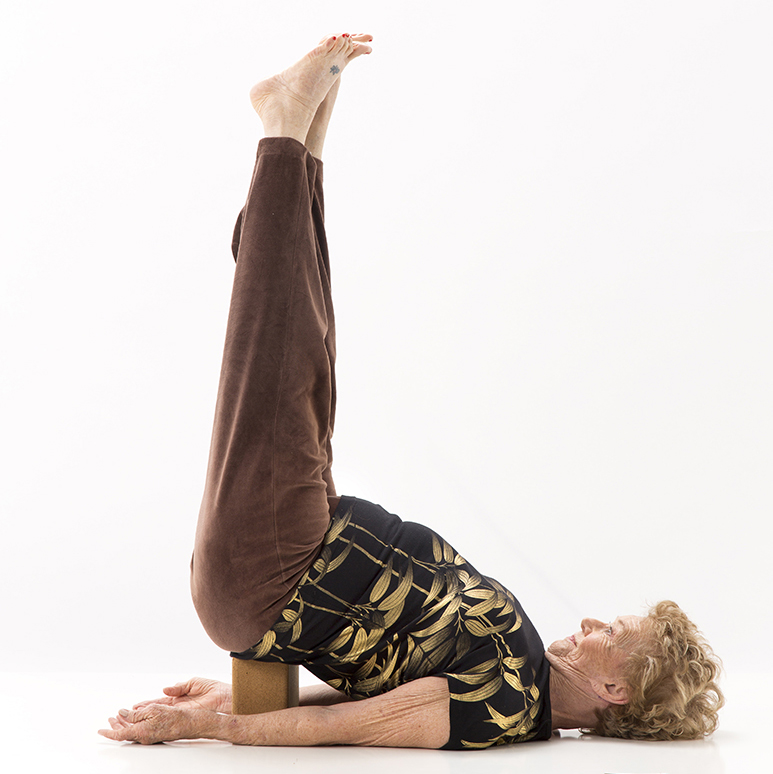Therapeutic yoga connects us with a deeper experience.
It was 1985 when I resumed yoga from the Intensive Care Unit of a Scottish hospital. I was 49 years old, 25 years into my yoga practice, and hospitalized with serious injuries after a head-on auto collision.
I woke up with two legs in traction. My hip, knee, ribs, and nose were broken. My lungs had collapsed, a tube was inserted into my trachea and I was on a respirator, unable to speak for weeks or walk for months. During my hospital stay my personal practice included watching the gorgeous dancer Judith Jamison on TV and imagining myself in her body, dancing. It was magic. During one visit my physical therapist told me to ‘breathe’ and I taught her about pranayama.
Many eye surgeries and orthopedic procedures later, I returned home and my yoga practice went through even more variations. I practiced in my neighbor’s pool and rode a stationary bike to rebuild atrophied muscles while stimulating adrenals and endorphins.
Years of incorporating the teachings and instructions of Indra Devi, Lilias Folan, Gary Kraftsow, Larry Payne and the Krishnamacharya Institute in India served and supported my healing. I walked again, took a teacher’s training course with Rod Stryker at YogaWorks, and assisted Erich Schiffmann among others. Now I teach yoga full-time with a focus on assisting people with special needs or disabilities. My scars are valuable reminders of how everything that connects us to a deeper experience of the body and mind is yoga.
My Personal Practice
These days, at the age of 77, I practice between 15 minutes and one hour, five to seven days a week. I work out in my home studio, bed, mat, kitchen, shower, and bathtub. I can be found outdoors, on the grass, at the beach, or in the pool. I create yoga opportunities using railings, steps, and stairs.
3 Favorites Poses
Downward Facing Dog
Supported Half Shoulder Stand
Lying Down Twist
I adapt these practice variations to account for my current abilities and former injuries.
Downward Facing Dog
Holding or leaning arms on mat, chair, couch, table, desk, wall and/or railing. My back, hamstrings, and neck all relish this pose.

Supported Half Shoulder Stand
Using a block or bolster under my hips. Legs against the wall is optional. Then I practice splits, bicycles, and criss-crosses. This inverted pose relieves lower back pressure. I become very present. I listen. I meditate and I pray.
Lying Down Twist
This twisting supine pose offers an incremental stretch before a release and rest.
Bliss Pose
Shoulder Stand
This posture offers me a new point of view on the world. With this pose, I feel I have fulfilled my ambitions to be an acrobat and ballerina.
Most Challenging
Balancing poses.
Best Instructions
Do not compare or compete. Rest.
How injuries are teachers
I have learned to respect and listen to my body, using each sensation to guide, inform, protect, and educate me as I practice. I am aware I can assist others and teach from the benefit of my experience. Mindfulness is key to this practice.
Last words
Enjoy, smile, laugh, be silly, stop. Rest.
